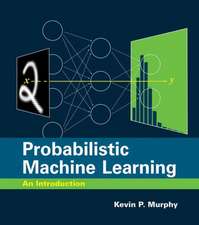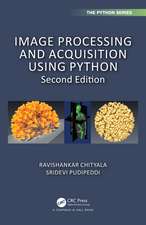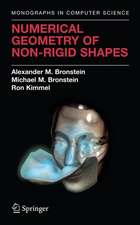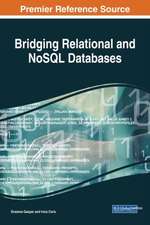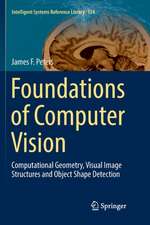Guide to Computational Geometry Processing: Foundations, Algorithms, and Methods
Autor J. Andreas Bærentzen, Jens Gravesen, François Anton, Henrik Aanæsen Limba Engleză Hardback – 7 iun 2012
| Toate formatele și edițiile | Preț | Express |
|---|---|---|
| Paperback (1) | 391.63 lei 6-8 săpt. | |
| SPRINGER LONDON – 11 iun 2014 | 391.63 lei 6-8 săpt. | |
| Hardback (1) | 538.69 lei 6-8 săpt. | |
| SPRINGER LONDON – 7 iun 2012 | 538.69 lei 6-8 săpt. |
Preț: 538.69 lei
Preț vechi: 673.37 lei
-20% Nou
Puncte Express: 808
Preț estimativ în valută:
103.09€ • 106.97$ • 86.17£
103.09€ • 106.97$ • 86.17£
Carte tipărită la comandă
Livrare economică 17-31 martie
Preluare comenzi: 021 569.72.76
Specificații
ISBN-13: 9781447140740
ISBN-10: 1447140745
Pagini: 352
Ilustrații: XVIII, 326 p.
Dimensiuni: 155 x 235 x 20 mm
Greutate: 0.61 kg
Ediția:2012
Editura: SPRINGER LONDON
Colecția Springer
Locul publicării:London, United Kingdom
ISBN-10: 1447140745
Pagini: 352
Ilustrații: XVIII, 326 p.
Dimensiuni: 155 x 235 x 20 mm
Greutate: 0.61 kg
Ediția:2012
Editura: SPRINGER LONDON
Colecția Springer
Locul publicării:London, United Kingdom
Public țintă
GraduateCuprins
Part I: Mathematical Preliminaries.- Vector Spaces, Affine Spaces, and Metric Spaces.- Differential Geometry.- Finite Difference Methods for Partial Differential Equations.- Part II: Computational Geometry Processing.- Polygonal Meshes.- Splines.- Subdivision.- Curvature in Triangle Meshes.- Mesh Smoothing and Variational Subdivision.- Parametrization of Meshes.- Simplifying and Optimizing Triangle Meshes.- Spatial Data Indexing and Point Location.- Convex Hulls.- Triangle Mesh Generation: Delaunay Triangulation.- 3D Surface Registration via Iterative Closest Point (ICP).- Surface Reconstruction using Radial Basis Functions.- Volumetric Methods for Surface Reconstruction and Manipulation.- Isosurface Polygonization.
Recenzii
From the book reviews:
“The book consists of two parts—Mathematical Preliminaries and Computational Geometry Processing. Almost 70 pages of linear algebra, differential geometry and finite difference methods comprise all the necessary concepts for the rest of the book. … the book fills a gap in the market for textbook-like publications on geometry processing topics. It could be a valuable source of initial ideas for people trying to extend their basic knowledge in the area.” (Pavel Chalmovianský, Mathematical Reviews, November, 2014)
“The book is brilliant in that it maintains a sane balance between theory and practice. It is written by practitioners, for practitioners--the authors are experienced programmers who have developed the geometry and linear algebra (GEL) library, which is being used in real-world applications--without losses in mathematical rigor or theoretical details. This elegant style enables both students and professionals to use it as a reference guide for fundamental topics in geometry processing. … The book is a handy companion for students and practitioners working in computer graphics and computer vision fields, but will also appeal to people working in any computational science and engineering field.” (Alin Anton, Computing Reviews, January, 2013)
“It focuses on the important techniques not covered by traditional courses on computer vision and computer graphics. … The book is presented in an accessible fashion full of images, examples, pseudocodes and exercises. … The book is suitable for professionals or graduate students who want to understand the theory and implement algorithms of geometry processing. It can be used for a self studing and as a course book as well.” (Agnieszka Lisowska, Zentralblatt MATH, Vol. 1252, 2012)
“The book consists of two parts—Mathematical Preliminaries and Computational Geometry Processing. Almost 70 pages of linear algebra, differential geometry and finite difference methods comprise all the necessary concepts for the rest of the book. … the book fills a gap in the market for textbook-like publications on geometry processing topics. It could be a valuable source of initial ideas for people trying to extend their basic knowledge in the area.” (Pavel Chalmovianský, Mathematical Reviews, November, 2014)
“The book is brilliant in that it maintains a sane balance between theory and practice. It is written by practitioners, for practitioners--the authors are experienced programmers who have developed the geometry and linear algebra (GEL) library, which is being used in real-world applications--without losses in mathematical rigor or theoretical details. This elegant style enables both students and professionals to use it as a reference guide for fundamental topics in geometry processing. … The book is a handy companion for students and practitioners working in computer graphics and computer vision fields, but will also appeal to people working in any computational science and engineering field.” (Alin Anton, Computing Reviews, January, 2013)
“It focuses on the important techniques not covered by traditional courses on computer vision and computer graphics. … The book is presented in an accessible fashion full of images, examples, pseudocodes and exercises. … The book is suitable for professionals or graduate students who want to understand the theory and implement algorithms of geometry processing. It can be used for a self studing and as a course book as well.” (Agnieszka Lisowska, Zentralblatt MATH, Vol. 1252, 2012)
Textul de pe ultima copertă
Optical scanning is rapidly becoming ubiquitous. From industrial laser scanners to medical CT, MR and 3D ultrasound scanners, numerous organizations now have easy access to optical acquisition devices that provide huge volumes of image data. However, the raw geometry data acquired must first be processed before it is useful.
This Guide to Computational Geometry Processing reviews the algorithms for processing geometric data, with a practical focus on important techniques not covered by traditional courses on computer vision and computer graphics. This is balanced with an introduction to the theoretical and mathematical underpinnings of each technique, enabling the reader to not only implement a given method, but also to understand the ideas behind it, its limitations and its advantages.
Topics and features:
This Guide to Computational Geometry Processing reviews the algorithms for processing geometric data, with a practical focus on important techniques not covered by traditional courses on computer vision and computer graphics. This is balanced with an introduction to the theoretical and mathematical underpinnings of each technique, enabling the reader to not only implement a given method, but also to understand the ideas behind it, its limitations and its advantages.
Topics and features:
- Presents an overview of the underlying mathematical theory, covering vector spaces, metric space, affine spaces, differential geometry, and finite difference methods for derivatives and differential equations
- Reviews geometry representations, including polygonal meshes, splines, and subdivision surfaces
- Examines techniques for computing curvature from polygonal meshes
- Describes algorithms for mesh smoothing, mesh parametrization, and mesh optimization and simplification
- Discusses point location databases and convex hulls of point sets
- Investigates the reconstruction of triangle meshes from point clouds, including methods for registration of point clouds and surface reconstruction
- Provides additional material at a supplementary website
- Includes self-study exercises throughout the text
Caracteristici
Provides a practical focus on important techniques not covered by traditional courses on computer vision and computer graphics Presents an introduction to the theoretical and mathematical underpinnings of each technique Includes self-study exercises throughout the text, and supplies additional material at a supplementary website Includes supplementary material: sn.pub/extras



